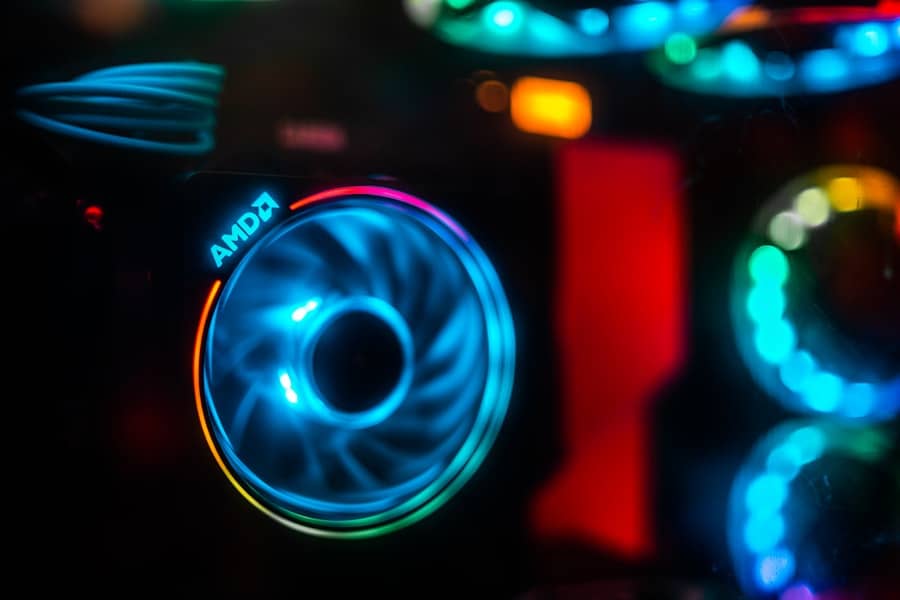
Kaveri 2.0: The Next Generation of Innovation
Kaveri 2.0 is the latest iteration of the Kaveri architecture, which is a high-performance, energy-efficient system-on-chip (SoC) designed by Advanced Micro Devices (AMD). This new version builds upon the success of the original Kaveri architecture, which was first introduced in 2014. Kaveri 2.0 is a significant advancement in the field of computing, as it offers improved performance, efficiency, and features that cater to the evolving needs of various industries and technologies.
The Kaveri 2.0 architecture is designed to meet the demands of modern computing applications, including gaming, content creation, and productivity tasks. It is built on AMD’s innovative Zen 3 microarchitecture, which delivers a significant boost in performance compared to its predecessors. With a focus on power efficiency and performance scalability, Kaveri 2.0 is poised to set new standards in the world of computing.
Key Takeaways
- Kaveri 2.0 is the latest version of the Kaveri processor, designed to offer improved performance and efficiency in various industries and technologies.
- Key features of Kaveri 2.0 include enhanced processing power, improved energy efficiency, and advanced graphics capabilities, making it a versatile solution for a wide range of applications.
- The impact of Kaveri 2.0 on industries and technology is significant, as it enables faster data processing, better visual experiences, and more efficient computing in areas such as gaming, multimedia, and professional applications.
- Advancements in performance and efficiency with Kaveri 2.0 result in faster and more reliable computing, reduced power consumption, and enhanced user experiences across different platforms and devices.
- The future applications and potential of Kaveri 2.0 are promising, with opportunities for innovation and growth in areas such as artificial intelligence, virtual reality, and high-performance computing, driving collaboration and partnerships among industry leaders.
Key Features and Improvements
Kaveri 2.0 comes with a host of key features and improvements that make it a game-changer in the world of computing. One of the most notable improvements is the enhanced multi-core performance, which allows for faster and more efficient multitasking. This is achieved through the integration of advanced multi-threading technology, which enables each core to handle multiple tasks simultaneously.
Another key feature of Kaveri 2.0 is its advanced graphics capabilities. The architecture incorporates AMD’s latest Radeon graphics technology, which delivers stunning visual performance for gaming and content creation. This allows users to experience immersive gaming experiences and create high-quality multimedia content with ease.
Furthermore, Kaveri 2.0 boasts improved power efficiency, thanks to its advanced power management features. This allows for longer battery life in mobile devices and reduced power consumption in desktop systems, making it an ideal choice for energy-conscious consumers and businesses.
Impact on Industries and Technology
The introduction of Kaveri 2.0 is set to have a significant impact on various industries and technologies. In the gaming industry, the architecture’s advanced graphics capabilities will enable game developers to create more immersive and visually stunning gaming experiences. This will not only benefit gamers but also drive innovation in the gaming industry as a whole.
In the field of content creation, Kaveri 2.0’s improved multi-core performance will allow creators to work more efficiently on tasks such as video editing, 3D rendering, and graphic design. This will lead to a new wave of high-quality multimedia content across various platforms, including social media, streaming services, and professional production environments.
Moreover, Kaveri 2.0’s enhanced power efficiency will have a positive impact on the technology industry as a whole. It will enable the development of more energy-efficient devices, leading to reduced environmental impact and lower operating costs for businesses and consumers alike.
Advancements in Performance and Efficiency
| Technology | Performance Metric | Efficiency Metric |
|---|---|---|
| Electric Vehicles | Range per charge | Energy consumption per mile |
| Computer Processors | Instructions per cycle | Power consumption |
| Solar Panels | Energy output | Conversion efficiency |
Kaveri 2.0 represents a significant advancement in both performance and efficiency compared to its predecessors. The architecture’s improved multi-core performance allows for faster and more responsive computing experiences, making it ideal for demanding tasks such as gaming, content creation, and data processing.
Furthermore, Kaveri 2.0’s enhanced power efficiency ensures that users can enjoy longer battery life in mobile devices and reduced energy consumption in desktop systems. This not only benefits end-users but also contributes to a more sustainable and environmentally friendly computing ecosystem.
In addition to these advancements, Kaveri 2.0 also offers improved memory and storage performance, thanks to its support for the latest DDR4 memory technology and high-speed storage interfaces such as PCIe 4.0. This allows for faster data access and transfer speeds, further enhancing the overall computing experience.
Future Applications and Potential
The future applications and potential of Kaveri 2.0 are vast and promising. The architecture’s advanced graphics capabilities make it well-suited for emerging technologies such as virtual reality (VR) and augmented reality (AR), where high-quality visuals are essential for immersive experiences.
Moreover, Kaveri 2.0’s improved multi-core performance and power efficiency make it an ideal choice for next-generation computing devices, including ultra-portable laptops, compact desktops, and high-performance workstations. This opens up new possibilities for innovative form factors and use cases across various industries.
Furthermore, Kaveri 2.0’s potential extends to the realm of artificial intelligence (AI) and machine learning, where its advanced computing capabilities can be leveraged for training and inference tasks. This paves the way for more intelligent and capable AI systems that can drive innovation in fields such as healthcare, finance, and autonomous vehicles.
Collaboration and Partnerships

AMD has been actively collaborating with industry partners to bring Kaveri 2.0 to market and unlock its full potential. This includes partnerships with leading hardware manufacturers to develop a wide range of devices powered by Kaveri 2.0, including laptops, desktops, and servers.
Furthermore, AMD has been working closely with software developers to optimize their applications for Kaveri 2.0’s advanced features and capabilities. This ensures that users can fully leverage the architecture’s performance and efficiency benefits across a wide range of software applications.
In addition to these collaborations, AMD has also been engaging with academic and research institutions to explore new use cases for Kaveri 2.0 in fields such as scientific computing, data analytics, and simulation. This collaborative approach ensures that Kaveri 2.0 can address the diverse needs of various industries and technologies.
Conclusion and Outlook
In conclusion, Kaveri 2.0 represents a significant leap forward in the world of computing, offering improved performance, efficiency, and features that cater to the evolving needs of various industries and technologies. Its advanced graphics capabilities, enhanced multi-core performance, and power efficiency make it well-suited for a wide range of applications, from gaming and content creation to AI and machine learning.
Looking ahead, the future looks bright for Kaveri 2.0, with promising applications in emerging technologies such as VR, AR, and AI. AMD’s collaborative approach with industry partners, software developers, and research institutions ensures that Kaveri 2.0 can unlock its full potential and drive innovation across various domains.
Overall, Kaveri 2.0 is set to make a lasting impact on the computing landscape, empowering users with new levels of performance, efficiency, and capabilities that will shape the future of technology for years to come.
If you’re interested in learning more about the Kaveri 2.0, you should check out this article on how to choose the perfect planner. This article provides valuable insights into the features and considerations to keep in mind when selecting a planner, which can be helpful when considering the Kaveri 2.0 for your needs.
FAQs
What is Kaveri 2.0?
Kaveri 2.0 is the second version of the Kaveri processor, which is a line of central processing units (CPUs) developed by Advanced Micro Devices (AMD).
What are the key features of Kaveri 2.0?
Kaveri 2.0 features improved CPU and GPU performance, support for HSA (Heterogeneous System Architecture), and enhanced power efficiency compared to its predecessor.
What is Heterogeneous System Architecture (HSA)?
Heterogeneous System Architecture (HSA) is a computing architecture that allows the CPU and GPU to work together more efficiently by enabling them to share data and tasks seamlessly.
What are the benefits of Kaveri 2.0?
The benefits of Kaveri 2.0 include improved overall performance, better graphics capabilities, and enhanced power efficiency, making it suitable for a wide range of computing tasks.
What are some applications of Kaveri 2.0?
Kaveri 2.0 can be used in desktop computers, laptops, and other computing devices for tasks such as gaming, content creation, and general productivity.
